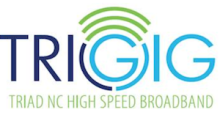Solon Set to Save in Ohio: Big Plans for I-Net
Solon, located in Ohio's northeast corner, is looking to save approximately $65,280 per year with a publicly owned fiber institutional network (I-Net). At the January 19 city council, an ordinance authorizing the Director of Finance to request bids for the project passed unanimously.
Cleveland.com recently reported that the city council is considering ditching its contract with Time Warner Cable as the city moves forward with a traffic signal project. The project would require streets to be excavated all over the community, a perfect time to install fiber connecting 8 municipal facilities. The publicly owned network will connect buildings such as the Solon Senior Center, the Solon Community Center, and three city fire stations. The traffic signal project will cost $5 million and is funded in a large part by a combination of state and federal grants with the city contributing approximately twenty percent of the total cost.
The city will also pay for the I-Net project, an additional $160,000 but will recoup its investment in less than 3 years through savings on telecommunications costs. The city has paid Time Warner Cable to connect the municipal facilities via fiber and provide Internet access since 1990. Solon currently pays $5,440 per month.
The city's water reclamation plant will not be connected to the new I-Net and will still use the incumbent because, due to its location, extending to the plant would cost another $100,000. The city will continue to pay Time Warner Cable $500 per month to connect the plant.
Work on the project could begin this spring.



